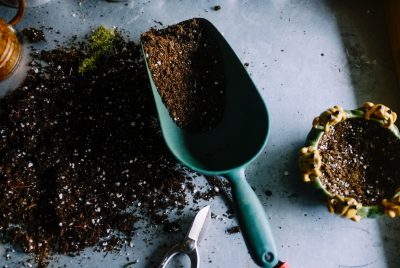Greenhouse Gardening: Cultivating Abundance Year-Round
Greenhouses have always fascinated me, offering a world of possibilities for nurturing plants and creating an oasis of green. In this article, I will explore the essential reasons why greenhouses are necessary for successful gardening and provide valuable suggestions to help you make the most of your greenhouse adventure.
Benefits of Greenhouse Gardening
Extended Growing Season and Climate Control
With a greenhouse, you can extend your growing season, enjoying fresh produce and vibrant flowers throughout the year. By controlling temperature, humidity, and light, greenhouses create an optimal environment for plants, allowing you to grow a wider range of crops.
Protection against Pests and Diseases
One of the significant advantages of a greenhouse is the shield it provides against pests and diseases. The enclosed structure acts as a barrier, preventing unwanted intruders from damaging your plants and reducing the need for harmful chemical interventions.
Enhanced Plant Growth and Productivity
Greenhouses create an ideal microclimate that promotes vigorous plant growth. With the ability to optimize conditions such as temperature, light, and air circulation, greenhouses offer the perfect setting for your plants to thrive, resulting in higher yields and healthier specimens.
Choosing the Right Greenhouse
To embark on your greenhouse gardening journey, it is essential to select the right greenhouse that suits your needs and space. Consider factors such as size, materials, location, and design to ensure an efficient and effective setup.
Considering Size and Materials
When choosing a greenhouse, assess the available space and consider your gardening goals. Whether you have limited room or an expansive garden, there are various greenhouse sizes and materials to suit every need.
Evaluating the Location and Orientation
The location of your greenhouse is crucial for optimal sunlight exposure and protection from harsh weather conditions. Assess the available space, taking into account the direction of sunlight and prevailing winds to maximize the benefits of your greenhouse.
Selecting the Appropriate Style and Design
Greenhouses come in a variety of styles and designs, from traditional glass structures to modern polycarbonate models. Consider factors such as aesthetics, functionality, and ease of maintenance when choosing a greenhouse that aligns with your preferences and gardening style.
Setting Up the Greenhouse
Once you have selected the right greenhouse, it’s time to set it up for optimal plant growth and productivity. Proper preparation and organization are key to creating a functional and efficient space.
Preparing the Site and Foundation
Before installing your greenhouse, ensure that the site is level and free from any obstructions. Clear the area of debris and vegetation, and consider laying a foundation to provide stability and prevent moisture-related issues.
Installing Ventilation and Heating Systems
Proper ventilation is crucial for maintaining a healthy greenhouse environment. Install vents and windows to facilitate air circulation, preventing excessive heat buildup and reducing the risk of fungal diseases. Depending on your climate, you may also need to install heating systems to protect your plants during colder months.
Organizing the Interior Space Efficiently
To make the most of your greenhouse space, plan the layout strategically. Consider factors such as plant height, access to sunlight, and ease of movement. Utilize shelving, benches, and hanging baskets to optimize space and create a well-organized and visually appealing greenhouse.
Essential Tools and Equipment for Greenhouse Gardening
Equipping your greenhouse with the right tools and equipment is essential for successful gardening. These items will help you efficiently manage your plants’ needs and maintain an optimal growing environment.
Potting and Propagation Supplies
Invest in high-quality potting soil, seed trays, pots, and propagation tools. These supplies will support healthy root development, seed germination, and successful transplanting of seedlings.
Irrigation and Watering Systems
Proper watering is crucial for plant health, and installing an irrigation system can simplify this task. Consider options such as drip irrigation or soaker hoses to provide consistent and controlled watering to your plants.
Monitoring and Control Devices
To effectively manage the greenhouse environment, invest in monitoring and control devices such as thermometers, hygrometers, and timers. These tools will help you track temperature, humidity, and light levels, allowing you to make adjustments as needed.
Selecting Suitable Plants for Greenhouse Gardening
With a greenhouse, you have the opportunity to grow a wide range of plants, including flowers, herbs, vegetables, and even exotic species. Consider these categories when selecting plants for your greenhouse:
Flowers and Ornamentals
Add beauty and color to your greenhouse with a variety of flowers and ornamental plants. Choose from popular options like roses, orchids, begonias, and geraniums. Research the specific care requirements of each plant to ensure they thrive in your greenhouse conditions.
Herbs and Vegetables
Enjoy a fresh supply of herbs and vegetables throughout the year by growing them in your greenhouse. Basil, mint, parsley, tomatoes, peppers, and lettuce are just a few examples of the many edible plants that flourish in a controlled greenhouse environment.
Tropical and Exotic Plants
Take advantage of the greenhouse’s ability to create a tropical microclimate and cultivate exotic plants that wouldn’t survive in your local outdoor conditions. Consider plants like orchids, ferns, bromeliads, and carnivorous plants to add a touch of exotic allure to your greenhouse oasis.
Greenhouse Maintenance and Care
Maintaining your greenhouse and providing proper care to your plants are crucial for their long-term health and productivity. Implement these practices to ensure your greenhouse garden thrives:
Temperature and Humidity Management
Regularly monitor and adjust the temperature and humidity levels in your greenhouse. Open vents or windows to lower temperatures on hot days, and use shading materials or misting systems to increase humidity when needed. Find the optimal balance for the plants you are growing.
Pest and Disease Control
Pests and diseases can quickly spread and wreak havoc on your greenhouse plants. Implement preventive measures such as regular inspections, proper sanitation, and the use of organic pest control methods when necessary. Monitor for signs of infestation and address them promptly to protect your plants.
Pruning and Training
Maintain proper plant shape and encourage productive growth through regular pruning and training. Remove dead or damaged foliage, and provide support for climbing or vining plants. Pruning also helps improve air circulation and light penetration, reducing the risk of fungal diseases.
Watering and Fertilization
Consistent and appropriate watering is essential for greenhouse plants. Monitor soil moisture levels and water as needed, considering the specific requirements of each plant species. Implement a fertilization schedule to provide essential nutrients for healthy growth. Consider organic fertilizers to promote sustainable and environmentally friendly practices.
Maximizing Productivity in Your Greenhouse
With proper planning and techniques, you can maximize the productivity of your greenhouse and enjoy abundant harvests. Implement these strategies to make the most of your growing space:
Succession Planting
By staggering plantings and continuously sowing seeds or transplanting seedlings, you can ensure a continuous supply of fresh produce throughout the year. As one crop reaches maturity, another is ready to take its place.
Vertical Gardening
Utilize vertical space by growing plants on trellises, hanging baskets, or vertical towers. This technique allows you to grow more plants in limited floor space while improving air circulation and maximizing light exposure.
Intercropping and Companion Planting
Make use of companion planting techniques to optimize space and promote plant health. Pairing compatible plants together can enhance pollination, deter pests, and improve nutrient uptake. Consider intercropping different plant species with complementary growth habits and requirements.
Troubleshooting Common Greenhouse Issues
Despite your best efforts, challenges may arise in greenhouse gardening. Here are some common issues and their solutions:
Temperature Fluctuations
Fluctuations in temperature can stress plants and affect their growth. You can install shade cloths or use ventilation systems to regulate temperatures during hot weather. Use insulating materials or greenhouse heaters to protect plants from extreme cold.
Pest Infestations
Pests can find their way into your greenhouse, damaging plants and reducing productivity. Implement integrated pest management strategies, including physical barriers, organic pest control methods, and the introduction of beneficial insects.
Diseases and Fungal Infections
High humidity levels in greenhouses can create a favorable environment for diseases and fungal infections. Practice good sanitation, provide adequate spacing between plants, and promote airflow to minimize the risk of diseases. Remove any infected plants promptly to prevent the spread of pathogens.
Conclusion
Greenhouse gardening offers a world of possibilities for plant enthusiasts and allows you to cultivate a diverse range of plants regardless of the outdoor climate. By creating a controlled environment, you can extend your growing season, experiment with exotic species, and enjoy a year-round supply of fresh produce.
Embrace the joys of greenhouse gardening by selecting the right greenhouse, equipping it with essential tools and equipment, and choosing suitable plants. Follow proper maintenance and care practices, maximize productivity, and troubleshoot common issues to ensure a thriving greenhouse garden.
Get ready to embark on a rewarding journey as you nurture your plants, witness their growth, and savor the rewards of your efforts. Start your greenhouse gardening adventure today and experience the endless possibilities it brings to your green thumb. Happy gardening!
FAQs
Can I use a small greenhouse for urban gardening?
Absolutely! A small greenhouse is a great option for urban gardening. You can make the most of limited space while creating a controlled environment for your plants. Choose compact and vertical-growing varieties to optimize space and enjoy fresh produce right at your doorstep.
How often should I water my greenhouse plants?
The frequency of watering depends on several factors such as plant species, weather conditions, and the type of growing medium. As a general rule, you can check the moisture level of the soil regularly and water when it feels dry. Avoid overwatering, as it can lead to root rot. Consistency is key, so use a gardener’s journal to maintain a regular watering schedule based on the specific needs of your plants.
What are some common pests in greenhouse gardening and how can I control them?
Common pests in greenhouse gardening include aphids, whiteflies, mites, and fungus gnats. To control them, practice integrated pest management (IPM) techniques. You can try to opt for physical barriers like insect netting, or introducing beneficial insects like ladybugs and predatory mites, or employing organic pest control methods such as neem oil or insecticidal soap. Regular monitoring and early intervention are crucial to prevent infestations from spreading.
Is it necessary to use artificial lighting in a greenhouse?
Artificial lighting is not always necessary, especially if your greenhouse receives ample natural sunlight. For example, I am residing in Oldenburg, Germany, there is limited sunlight during the winter months, supplemental lighting is required to provide the required light intensity and duration for optimal plant growth. LED grow lights are energy-efficient options that can mimic sunlight and promote healthy plant development.
How do I maintain proper ventilation in my greenhouse?
Proper ventilation is essential for maintaining a healthy greenhouse environment. To ensure adequate airflow, consider installing vents, louvers, or windows that can be opened and closed as needed. This allows for temperature regulation, reduces humidity, and helps prevent the buildup of harmful gases. Use circulation fans to promote air movement and prevent stagnant conditions. Regularly check and clean vents and fans to ensure unrestricted airflow.
Remember, every greenhouse is unique, and adjusting these practices based on your specific circumstances will help you create an ideal growing environment for your plants.





